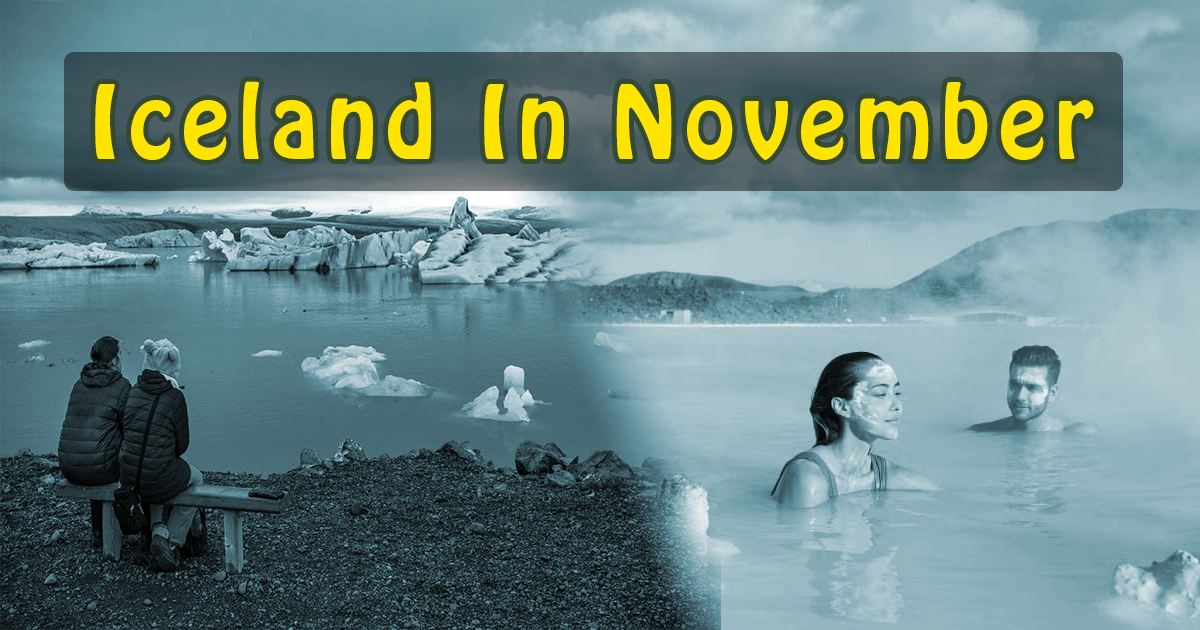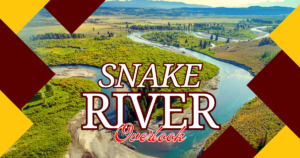November is an enchanting time to visit Iceland. While many travelers might think of Iceland as a summer destination, the winter months offer a unique and magical experience. From stunning Northern Lights to serene landscapes, Iceland in November promises a memorable adventure. This guide will cover everything you need to know about visiting Iceland in November, including weather, activities, travel tips, and more.
Weather and Climate in Iceland in November
Average Temperatures
In November, Iceland begins to transition fully into winter. The average temperatures range from about -1°C to 4°C (30°F to 39°F). While it’s generally cold, it’s not as severe as the deep winter months of January or February. However, the weather can be unpredictable, with sudden changes and varying conditions.
Daylight Hours
Daylight in November is limited, with around 5-7 hours of daylight per day. This can impact your sightseeing plans, but it also means you have a greater chance of witnessing the Northern Lights in the dark, clear nights.
What to Expect
Expect a mix of rain, snow, and wind. It’s essential to be prepared for varying weather conditions. Snowfall is common, especially towards the end of the month, adding a picturesque charm to Iceland’s landscapes.
Top Activities and Attractions in November
Northern Lights Viewing
One of the highlights of visiting Iceland in November is the opportunity to see the Northern Lights. The long, dark nights provide ideal conditions for witnessing this natural phenomenon. Consider taking a guided tour to maximize your chances of seeing the aurora borealis, as local guides are skilled in finding the best viewing spots.
Winter Tours and Adventures
November is a great time for winter adventures. You can explore ice caves, go glacier hiking, or enjoy snowmobiling. Many tour operators offer packages specifically designed for the winter season, ensuring a safe and exhilarating experience.
Reykjavik and Its Highlights
Reykjavik, Iceland’s capital, is vibrant in November. Visit the city’s museums, such as the National Museum of Iceland or the Icelandic Phallological Museum, to learn about Icelandic history and culture. Don’t miss the Blue Lagoon, a geothermal spa located just outside the city, where you can relax in warm, mineral-rich waters.
Travel Tips for Visiting Iceland in November
Best Time to Visit
November is an off-peak season for tourism in Iceland, which means fewer crowds and potentially lower prices. However, it’s crucial to be prepared for the colder weather and shorter days. If you want to experience the Northern Lights and enjoy winter activities without the summer tourist rush, November is an ideal time.
Health and Safety Tips
Ensure you dress in layers, as the weather can vary throughout the day. Wear waterproof and windproof clothing to stay comfortable. It’s also wise to keep an eye on weather forecasts and road conditions, as sudden storms can occur.
Local Customs and Etiquette
Icelanders are known for their friendliness and hospitality. When visiting, be respectful of local customs and nature. Avoid disturbing wildlife and follow guidelines for preserving natural sites.
What to Pack for Iceland in November
Essential Clothing and Gear
Packing for Iceland in November requires careful consideration. Bring warm, waterproof clothing, including a thermal base layer, a fleece or wool sweater, a waterproof jacket, and insulated gloves. Sturdy, waterproof boots are also essential for navigating icy or snowy conditions.
Weather-Specific Items
Include items such as a hat, scarf, and thermal socks to keep warm. A good-quality camera is also recommended for capturing the stunning winter landscapes and the Northern Lights.
Packing Checklist
- Thermal base layers
- Fleece or wool sweaters
- Waterproof and windproof jacket
- Insulated gloves
- Warm hat and scarf
- Waterproof boots
- Camera and extra batteries
Accommodation Options for November
Recommended Hotels and Lodgings
Iceland offers a range of accommodation options from luxury hotels to cozy guesthouses. In Reykjavik, consider staying at places like the CenterHotel Thingholt or the Icelandair Hotel Reykjavik Natura. These options provide comfort and are centrally located for easy access to city attractions and tours.
Unique Stays
For a unique experience, look into staying at an ice hotel or a remote cabin. These options offer a distinctive way to enjoy Iceland’s natural beauty and isolation. Many of these accommodations provide fantastic views of the Northern Lights.
Local Cuisine and Dining Experiences
Traditional Icelandic Foods
November is a great time to explore Icelandic cuisine. Try traditional dishes like lamb stew (kjötsúpa), Icelandic hot dogs, or skyr, a type of yogurt. Many restaurants offer local specialties made from fresh, seasonal ingredients.
Where to Eat
Reykjavik boasts a variety of dining options. For a fine dining experience, visit Dill Restaurant, which focuses on modern Icelandic cuisine. For something more casual, consider visiting Bæjarins Beztu Pylsur, known for its famous Icelandic hot dogs.
Experiencing Icelandic Culture in November
Icelandic Festivals and Events
While November in Iceland is quieter compared to the summer months, it’s still a great time to experience local culture. Reykjavik hosts a range of events and festivals that offer insight into Icelandic traditions.
Reykjavik International Film Festival (RIFF), held in early November, showcases a variety of films from around the world and provides an opportunity to engage with Icelandic cinema.
Another notable event is DesignMarch, a design festival featuring Icelandic and international designers. Although it mainly occurs in March, it’s worth checking local event listings for any pre-events or related activities in November.
Exploring Icelandic Arts and History
November is a perfect time to delve into Iceland’s rich arts and history. Visit the National Gallery of Iceland to explore contemporary Icelandic art. The museum’s collection includes works from both renowned and emerging artists, providing a comprehensive overview of the country’s artistic landscape.
Additionally, the Reykjavik Art Museum offers exhibitions that highlight Icelandic culture and creativity. The museum comprises three separate buildings, each focusing on different aspects of Icelandic art.
Safety Tips for Traveling in Iceland in November
Driving in Winter Conditions
Driving in Iceland during November requires extra caution. Roads can be icy and conditions can change rapidly. Always check the Icelandic Road and Coastal Administration’s website for current road conditions before setting out. Ensure your rental car is equipped with winter tires and consider renting a 4WD vehicle for added safety.
If you’re not comfortable driving in winter conditions, consider joining guided tours. Many tour operators offer winter packages that include transportation and local guides who are experienced in handling Iceland’s winter weather.
Staying Safe in the Cold
When exploring Iceland’s natural wonders, dress in layers to stay warm and dry. Hypothermia and frostbite are risks in extreme cold, so be prepared with appropriate clothing. Use waterproof outer layers to protect against snow and rain, and ensure your boots have good traction for icy surfaces.
It’s also wise to carry a small first aid kit and emergency supplies, including food, water, and a flashlight. Being prepared will help you handle unexpected situations more effectively.
Navigating Iceland: Transportation Tips
Renting a Car in Winter
Renting a car allows you to explore Iceland at your own pace. Ensure your rental vehicle is equipped for winter driving conditions, including snow tires and possibly a 4WD vehicle. Be cautious of icy roads and always check road conditions before setting out.
Public Transportation Options
If you prefer not to drive, Iceland has a reliable public transportation system, including buses and domestic flights. Reykjavik’s bus system can take you to major attractions and tour pick-up points.
Budgeting for Your November Trip to Iceland
Cost Estimates
Iceland can be expensive, so budgeting is essential. On average, expect to spend around $150-200 per day on accommodation, meals, and activities. However, costs can vary based on your choices and travel style.
Tips for Saving Money
To save money, consider staying in hostels or guesthouses, eating at local cafes, and booking tours in advance. Traveling during the off-peak season can also help reduce costs.
Exploring Iceland in November
When planning your trip to Iceland in November, it’s helpful to know what to expect from the weather and activities. For those interested in the experiences available throughout the year, including the earlier part of the season, you can also check out our guide on Iceland in October.
Conclusion and Final Thoughts
Iceland in November offers a unique and magical experience with fewer crowds and stunning winter landscapes. From viewing the Northern Lights to exploring ice caves, there’s something for every traveler. Be prepared for the weather, pack appropriately, and make the most of the shorter days and longer nights.
FAQs about Traveling to Iceland in November
1. What is the weather like in Iceland in November? The weather in November is cold, with temperatures ranging from -1°C to 4°C (30°F to 39°F). Expect a mix of rain, snow, and wind.
2. Can I see the Northern Lights in November? Yes, November is an excellent time to see the Northern Lights due to the long, dark nights and relatively clear skies.
3. What should I pack for a trip to Iceland in November? Pack warm, waterproof clothing, including thermal base layers, a fleece or wool sweater, a waterproof jacket, and insulated gloves.
4. Are there any special events in Reykjavik in November? Reykjavik hosts various events and festivals in November, including cultural events and music performances. Check local listings for specific dates.
5. How can I get around Iceland in November? You can rent a car equipped for winter driving or use public transportation, including buses and domestic flights.
For more travel tips and guides, visit My Read Magazine and stay updated on the best destinations and experiences.
Philip John is the dedicated admin of My Read Magazine, ensuring every article meets the highest standards before publication. With years of editorial experience, he carefully reviews each piece for accuracy, clarity, and relevance. His commitment to quality helps maintain the magazine’s reputation as a trusted and reliable source of information for readers worldwide.




